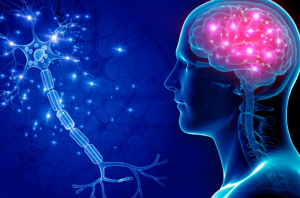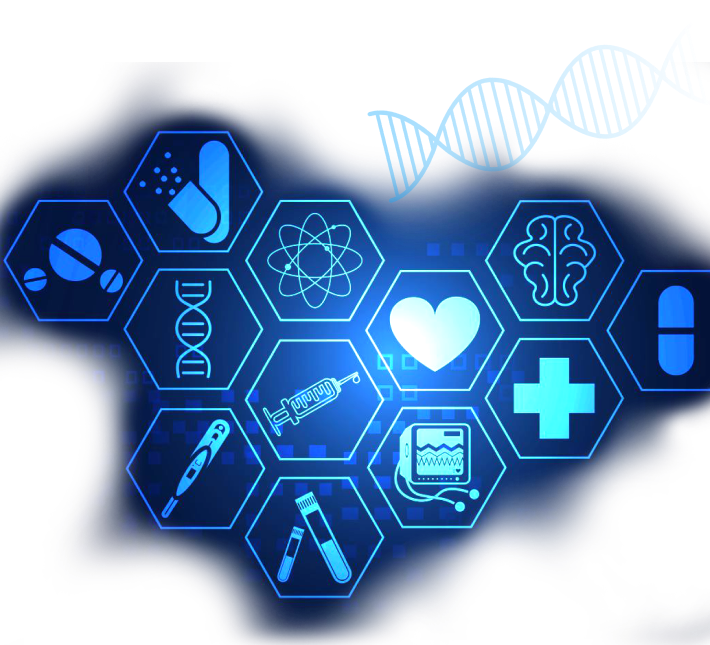Mental Disorders
Key facts
1 in every 8 people in the world live with a mental disorder
Mental disorders involve significant disturbances in thinking,
emotional regulation, or behaviour
There are many different types of mental disorders
Effective prevention and treatment options exist
Most people do not have access to effective care
Key facts
1 in every 8 people in the world live with a mental disorder
Mental disorders involve significant disturbances in thinking, emotional
regulation, or behaviour
There are many different types of mental disorders
Effective prevention and treatment options exist
Most people do not have access to effective care

A mental disorder is characterized by a clinically significant disturbance in an
individual’s cognition, emotional regulation, or behaviour. It is usually
associated with distress or impairment in important areas of functioning.
There are many different types of mental disorders. Mental disorders may
also be referred to as mental health conditions. The latter is a broader term
covering mental disorders, psychosocial disabilities and (other) mental states
associated with significant distress, impairment in functioning, or risk of self-
harm. This fact sheet focuses on mental disorders as described by the
International Classification of Diseases 11th Revision (ICD-11).
In 2019, 1 in every 8 people, or 970 million people around the world were
living with a mental disorder, with anxiety and depressive disorders the most
common (1). In 2020, the number of people living with anxiety and depressive
disorders rose significantly because of the COVID-19 pandemic. Initial
estimates show a 26% and 28% increase respectively for anxiety and major
depressive disorders in just one year (2). While effective prevention and
treatment options exist, most people with mental disorders do not have
access to effective care. Many people also experience stigma, discrimination
and violations of human rights.
Post-Traumatic Stress Disorder (PTSD)
The prevalence of PTSD and other mental disorders is high in conflict-affected
settings (3). PTSD may develop following exposure to an extremely
threatening or horrific event or series of events. It is characterised by all of the
following: 1) re-experiencing the traumatic event or events in the present
(intrusive memories, flashbacks, or nightmares); 2) avoidance of thoughts and
memories of the event(s), or avoidance of activities, situations, or people
reminiscent of the event(s); and 3) persistent perceptions of heightened
current threat. These symptoms persist for at least several weeks and cause
significant impairment in functioning. Effective psychological treatment
exists.
Mental Health Consequences of
Traumatic Brain Injury
Traumatic brain injury (TBI) is associated with a host of psychiatric and
neurobehavioral problems. As mortality rates have declined for severe TBI,
attention has turned to the cognitive, affective, and behavioral sequelae of injuries
across the severity spectrum, which are often more disabling than residual physical
effects. Moderate and severe TBI can cause personality changes including
impulsivity, severe irritability, affective instability, and apathy. Mild TBI, once
considered a largely benign phenomenon, is now known to be associated with a
range of affective symptoms, with suicidality, and with worsening or new onset of
several psychiatric disorders including posttraumatic stress disorder and major
depressive disorder. Repetitive head impacts, often in athletic contexts, are now
believed to be associated with a number of emotional and behavioral sequelae.
The nature and etiology of mental health manifestations of TBI (including a
combination of brain dysfunction and psychological trauma and interrelationships
between cognitive, affective, and physical symptoms) are complex and have been
a focus of recent epidemiological and mechanistic studies. This paper will review
the epidemiology of psychiatric and neurobehavioral problems after TBI in military,
civilian, and athletic contexts.
Anxiety Disorders
In 2019, 301 million people were living with an anxiety disorder including 58
million children and adolescents (1). Anxiety disorders are characterised by
excessive fear and worry and related behavioural disturbances. Symptoms are
severe enough to result in significant distress or significant impairment in
functioning. There are several different kinds of anxiety disorders, such as:
generalised anxiety disorder (characterised by excessive worry), panic
disorder (characterised by panic attacks), social anxiety disorder
(characterised by excessive fear and worry in social situations), separation
anxiety disorder (characterised by excessive fear or anxiety about separation
from those individuals to whom the person has a deep emotional bond), and
others. Effective psychological treatment exists, and depending on the age
and severity, medication may also be considered.
Depression
In 2019, 280 million people were living with depression, including 23 million
children and adolescents (1). Depression is different from usual mood
fluctuations and short-lived emotional responses to challenges in everyday
life. During a depressive episode, the person experiences depressed mood
(feeling sad, irritable, empty) or a loss of pleasure or interest in activities, for
most of the day, nearly every day, for at least two weeks. Several other
symptoms are also present, which may include poor concentration, feelings of
excessive guilt or low self-worth, hopelessness about the future, thoughts
about dying or suicide, disrupted sleep, changes in appetite or weight, and
feeling especially tired or low in energy. People with depression are at an
increased risk of suicide. Yet, effective psychological treatment exists, and
depending on the age and severity, medication may also be considered.
symptoms are also present, which may include poor concentration, feelings of
excessive guilt or low self-worth, hopelessness about the future, thoughts
about dying or suicide, disrupted sleep, changes in appetite or weight, and
feeling especially tired or low in energy. People with depression are at an
increased risk of suicide. Yet, effective psychological treatment exists, and
depending on the age and severity, medication may also be considered.
Schizophrenia
Schizophrenia affects approximately 24 million people or 1 in 300 people
worldwide (1). People with schizophrenia have a life expectancy 10-20 years
below that of the general population (4). Schizophrenia is characterised by
significant impairments in perception and changes in behaviour. Symptoms
may include persistent delusions, hallucinations, disorganised thinking, highly
disorganised behaviour, or extreme agitation. People with schizophrenia may
experience persistent difficulties with their cognitive functioning. Yet, a
range of effective treatment options exist, including medication,
psychoeducation, family interventions, and psychosocial rehabilitation.
Bipolar Disorder
In 2019, 40 million people experienced bipolar disorder (1). People with
bipolar disorder experience alternating depressive episodes with periods of
manic symptoms. During a depressive episode, the person experiences
depressed mood (feeling sad, irritable, empty) or a loss of pleasure or interest
in activities, for most of the day, nearly every day. Manic symptoms may
include euphoria or irritability, increased activity or energy, and other
symptoms such as increased talkativeness, racing thoughts, increased self-
esteem, decreased need for sleep, distractibility, and impulsive reckless
behaviour. People with bipolar disorder are at an increased risk of suicide. Yet
effective treatment options exist including psychoeducation, reduction of
stress and strengthening of social functioning, and medication.
Schizophrenia
Schizophrenia affects approximately 24 million people or 1 in 300 people
worldwide (1). People with schizophrenia have a life expectancy 10-20 years
below that of the general population (4). Schizophrenia is characterised by
significant impairments in perception and changes in behaviour. Symptoms
may include persistent delusions, hallucinations, disorganised thinking, highly
disorganised behaviour, or extreme agitation. People with schizophrenia may
experience persistent difficulties with their cognitive functioning. Yet, a
range of effective treatment options exist, including medication,
psychoeducation, family interventions, and psychosocial rehabilitation.
Eating Disorders
In 2019, 14 million people experienced eating disorders including almost 3
million children and adolescents (1). Eating disorders, such as anorexia
nervosa and bulimia nervosa, involve abnormal eating and preoccupation
with food as well as prominent body weight and shape concerns. The
symptoms or behaviours result in significant risk or damage to health,
significant distress, or significant impairment of functioning. Anorexia nervosa
often has its onset during adolescence or early adulthood and is associated
with premature death due to medical complications or suicide. Individuals
with bulimia nervosa are at a significantly increased risk for substance use,
suicidality, and health complications. Effective treatment options exist,
including family-based treatment and cognitive-based therapy.
Disruptive behaviour and dissocial disorders
40 million people, including children and adolescents, were living with
conduct-dissocial disorder in 2019 (1). This disorder, also known as conduct
disorder, is one of two disruptive behaviour and dissocial disorders, the other
is oppositional defiant disorder. Disruptive behaviour and dissocial disorders
are characterised by persistent behaviour problems such as persistently
defiant or disobedient to behaviours that persistently violate the basic rights
of others or major age-appropriate societal norms, rules, or laws. Onset of
disruptive and dissocial disorders, is commonly, though not always, during
childhood. Effective psychological treatments exist, often involving parents,
caregivers, and teachers, cognitive problem-solving or social skills training.
Neurodevelopmental disorders
Neurodevelopmental disorders are behavioural and cognitive disorders,
that? arise during the developmental period, and involve significant difficulties
in the acquisition and execution of specific intellectual, motor, language, or
social functions.
Neurodevelopmental disorders include disorders of intellectual development,
autism spectrum disorder, and attention deficit hyperactivity disorder (ADHD)
amongst others. ADHD is characterised by a persistent pattern of inattention
and/or hyperactivity-impulsivity that has a direct negative impact on
academic, occupational, or social functioning. Disorders of intellectual
development are characterised by significant limitations in intellectual
functioning and adaptive behaviour, which refers to difficulties with everyday
conceptual, social, and practical skills that are performed in daily life. Autism
spectrum disorder (ASD) constitutes a diverse group of conditions
characterised by some degree of difficulty with social communication and
reciprocal social interaction, as well as persistent restricted, repetitive, and
inflexible patterns of behaviour, interests, or activities.
Effective treatment options exist including psychosocial interventions,
behavioural interventions, occupational and speech therapy. For certain
diagnoses and age groups, medication may also be considered.
Who is at risk from developing a mental
disorder?
At any one time, a diverse set of individual, family, community, and structural
factors may combine to protect or undermine mental health. Although most
people are resilient, people who are exposed to adverse circumstances –
including poverty, violence, disability, and inequality – are at higher risk.
Protective and risk factors include individual psychological and biological
factors, such as emotional skills as well as genetics. Many of the risk and
protective factors are influenced through changes in brain structure and/or
function.
Health systems and social support
Health systems have not yet adequately responded to the needs of people
with mental disorders and are significantly under resourced. The gap
between the need for treatment and its provision is wide all over the world;
and is often poor in quality when delivered. For example, only 29% of people
with psychosis (5) and only one third of people with depression receive formal
mental health care (6).
People with mental disorders also require social support, including support in
developing and maintaining personal, family, and social relationships. People
with mental disorders may also need support for educational programmes,
employment, housing, and participation in other meaningful activities.
Mental Health Services
Find out how to access VA Foreign Medical Services mental health services for posttraumatic stress disorder (PTSD), psychological effects of military sexual trauma (MST), Traumatic Brain Injury (TBI) depression, grief, anxiety, and other needs. You can use some services even if you’re not enrolled in the Foreign Medical Services. If you need support for a specific mental health problem—or if you’re having problems sleeping, controlling your anger, or readjusting to civilian life—you are not alone. And we can help.




